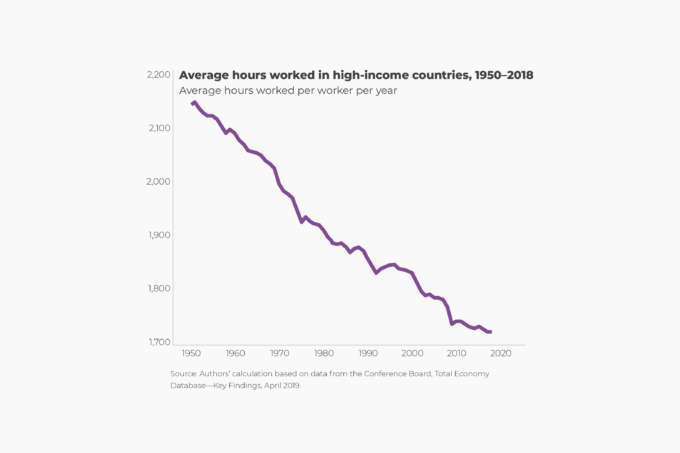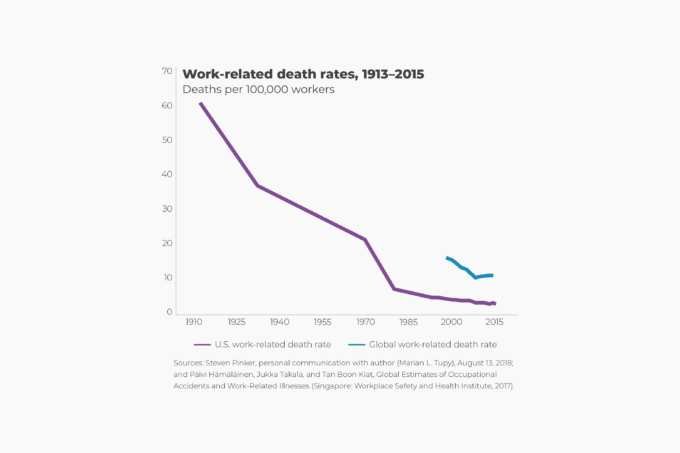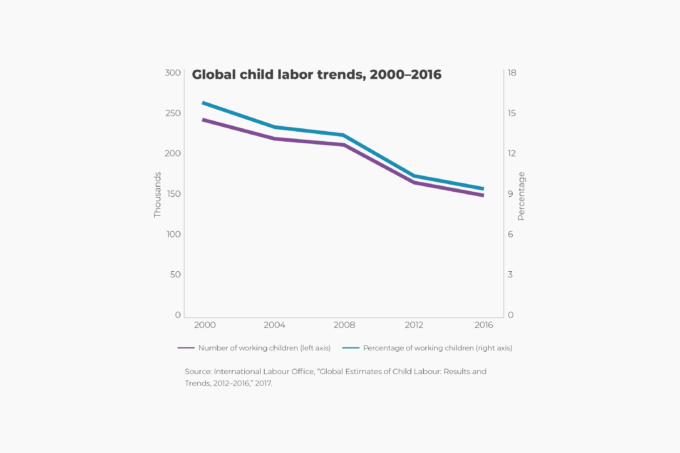Before the Industrial Revolution, between 80 percent and 90 percent of the world’s population worked in agriculture. At the start of the 19th century, people in Western Europe and North America began to move into manufacturing jobs en masse. Factory jobs have been criticized by philosophers like Karl Marx, lampooned by comedians like Charlie Chaplin, and bemoaned by poets like William Blake.
By and large, people moved from farm work to factory work in the cities willingly, for the latter provided higher wages, greater independence, and cultural stimulation. The share of the U.S. workforce employed on farms fell from 90 percent in 1790 to less than 2 percent today. The decline in agricultural employment still continues elsewhere. Between 1991 and 2018, agricultural employment fell from 44 percent to 28 percent globally. Only in very poor countries, such as Bhutan and Zimbabwe, does agriculture continue to employ over 50 percent of laborers.
In the United States, the manufacturing sector employed just 15 percent of the workforce in 1880. Manufacturing employment peaked at 38 percent in 1944. By 2019, it fell to 8.5 percent. Conversely, the share of workers employed in the service sector rose from 31 percent in 1900 to 78 percent in 1999. In 2016, it stood at 81 percent. Similar trends can be observed in other advanced economies, such as Germany, Japan, and the United Kingdom.
Meanwhile, manufacturing jobs have grown in countries that embraced industrialization in more recent decades. Between 1991 and 2018, for example, industrial employment rose from 14 percent to 21 percent in Bangladesh, from 22 percent to 29 percent in China, from 15 percent to 25 percent in India, and from 12 percent to 26 percent in Vietnam.
History suggests that, as these rapidly industrializing countries become richer, the service sector will play an increasingly prominent part in their economic development.
Are these employment trends cause for worry? Far from it. The service sector consists of jobs in the information sector, investment services, technical and scientific services, healthcare, and social assistance services, as well as in arts, entertainment, and recreation. Most of these jobs are less physically arduous, more intellectually stimulating, and better paid than either agricultural or manufacturing jobs.
They are also less dangerous. In 2014, global fatality rates per 100,000 employees in agriculture ranged from 7.8 deaths in high-income countries to 27.5 deaths in Southeast Asia and the Western Pacific. In manufacturing, the range was from 3.8 in high-income countries to 21.1 in Africa. The range for the service sector was from 1.5 in high-income countries to 17.7 in Africa.








